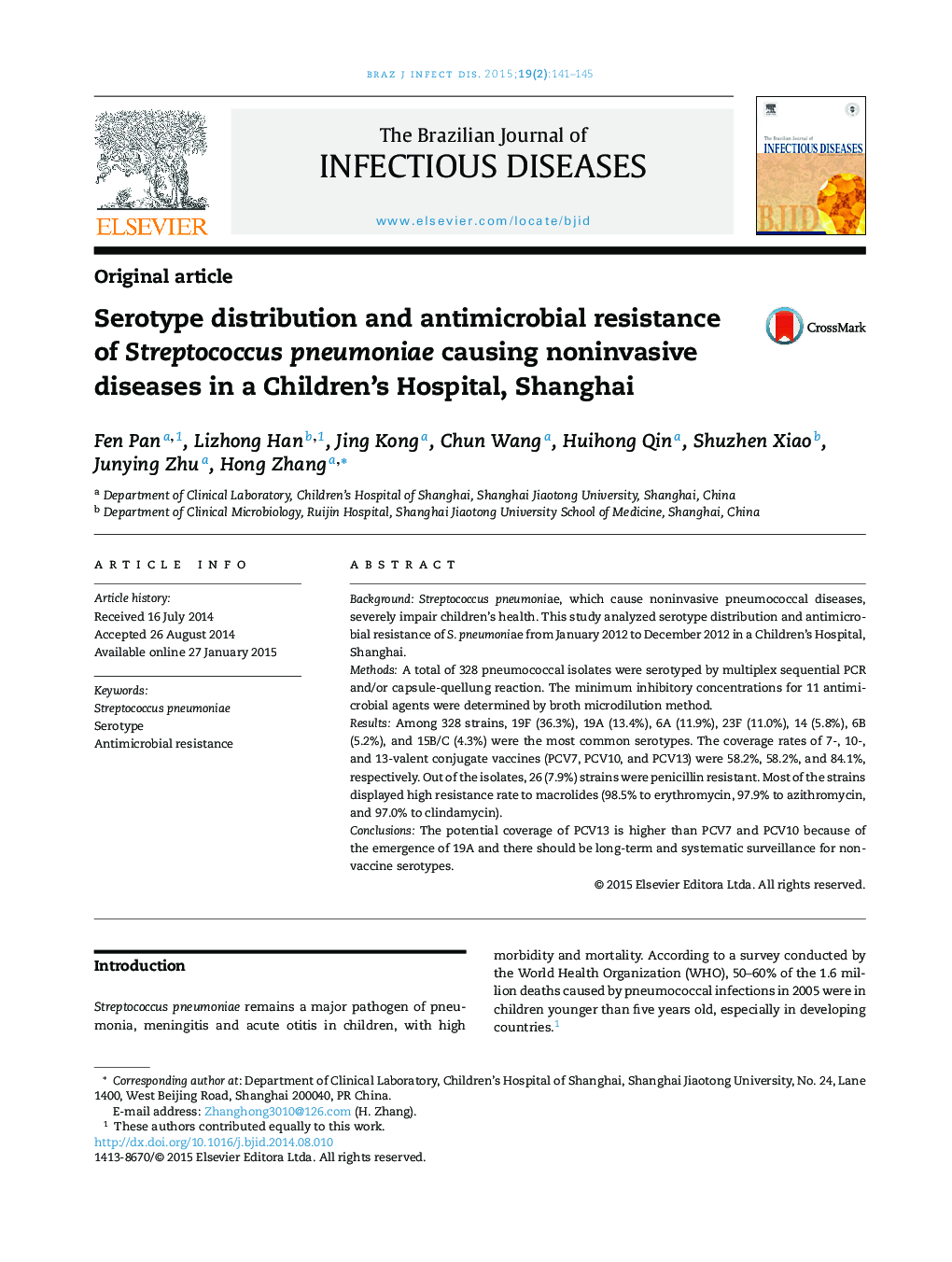| Article ID | Journal | Published Year | Pages | File Type |
|---|---|---|---|---|
| 3343824 | The Brazilian Journal of Infectious Diseases | 2015 | 5 Pages |
BackgroundStreptococcus pneumoniae, which cause noninvasive pneumococcal diseases, severely impair children's health. This study analyzed serotype distribution and antimicrobial resistance of S. pneumoniae from January 2012 to December 2012 in a Children's Hospital, Shanghai.MethodsA total of 328 pneumococcal isolates were serotyped by multiplex sequential PCR and/or capsule-quellung reaction. The minimum inhibitory concentrations for 11 antimicrobial agents were determined by broth microdilution method.ResultsAmong 328 strains, 19F (36.3%), 19A (13.4%), 6A (11.9%), 23F (11.0%), 14 (5.8%), 6B (5.2%), and 15B/C (4.3%) were the most common serotypes. The coverage rates of 7-, 10-, and 13-valent conjugate vaccines (PCV7, PCV10, and PCV13) were 58.2%, 58.2%, and 84.1%, respectively. Out of the isolates, 26 (7.9%) strains were penicillin resistant. Most of the strains displayed high resistance rate to macrolides (98.5% to erythromycin, 97.9% to azithromycin, and 97.0% to clindamycin).ConclusionsThe potential coverage of PCV13 is higher than PCV7 and PCV10 because of the emergence of 19A and there should be long-term and systematic surveillance for non-vaccine serotypes.
